A Few More Beautiful Creatures
A few years ago I began spending a summer here and there rearing some of the most beautiful moths ever. They don't save the world from anything, as their caterpillars eat leaves of shade trees. I got my start in China, in a place where pesticides weren't over-used. At the university where I was teaching, many of the buildings, including the graduate student housing, were built around a very special little pond. Its name was Hu bing Tan, or "measuring soldiers pond". That's because in the Three Kingdoms period, the general used to march his soldiers into this depression and when it was full, he pronounced that to be a regiment. Now there is water in the pond most of the year, and around the edge of the pond were planted lovely graceful willow trees. On each tree, I noticed, there were a couple of lovely green caterpillars. I started taking home the caterpillars and each day went to the pond to gather willow branches to feed them. They made cocoons and in the spring they began to open up into a moth that I thought must be a Luna Moth. It was not - it was Actias Ningpoana, named for the Ningbo region. The last one in this row is a real American Luna moth. Can you see the difference? So a few years back I found a source for Luna Moth cocoons. I bought a half dozen and when they began to hatch in the spring, some of them mated and laid eggs. The one above is a female - see how large her abdomen is - it's full of eggs just waiting to be fertilized! I fed the caterpillars on walnut leaves until they made themselves into cocoons again and then reared more the next year.
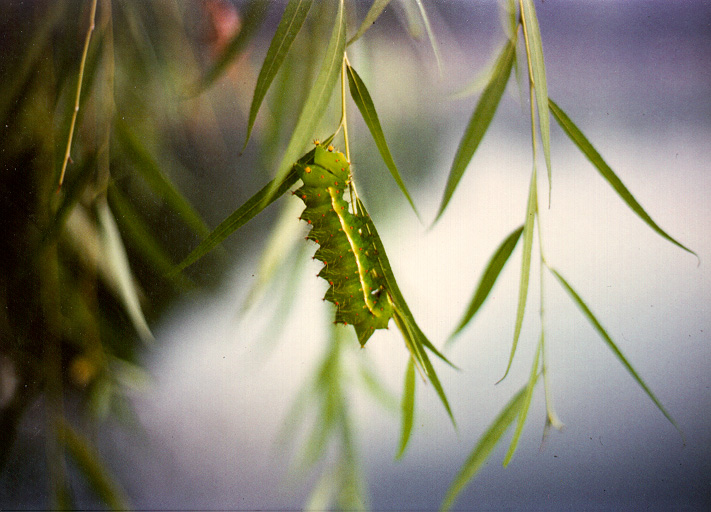


In succeeding years, I was able to rear Cecropias and then Polyphemus from caterpillars to adults. The Cecropia caterpillars loved Sassafras. Look how they have pointy horns, and how the points have points too; then look at the reflections of the pointy points! Remember the word for that self-resembling property? Fractals! Here is one of the Polyphemus moths. The last big moth here is the Attacus Atlas Moth, which I bought online. You may notice that the Atlas moth's forewings are quite elongated and their tips even resemble a big snake's head.

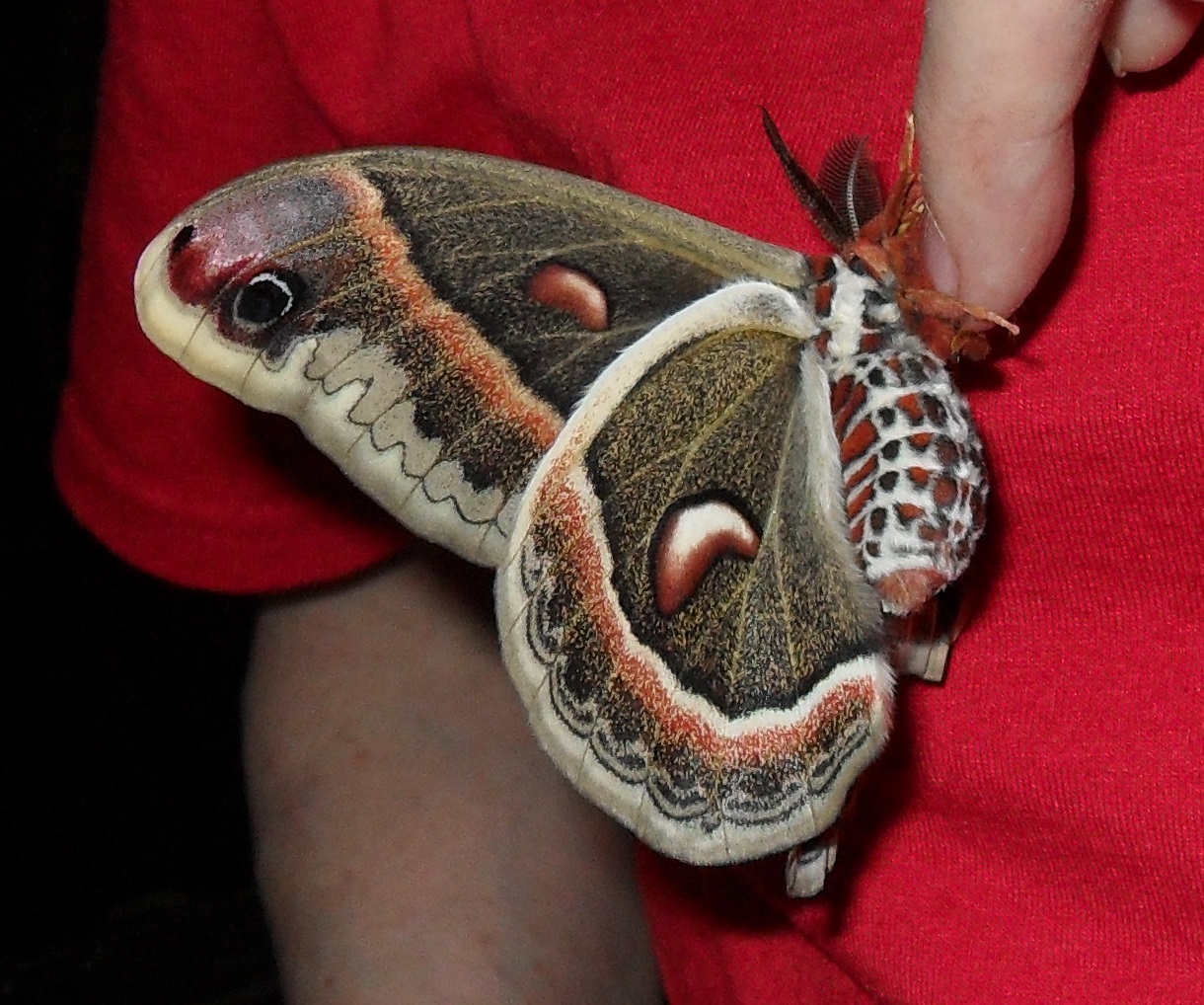
I would like for you to look at the wingtips of the polyphemus and the cecropia as well. I hope you can make out the vaguely snaky tip of the Cecropia, then the the Polyphemus, and finally at the Atlas again. This is evolution at work, gradually elongating the snaky face until the one that really needs protection from birds has the snakiest wingtip.
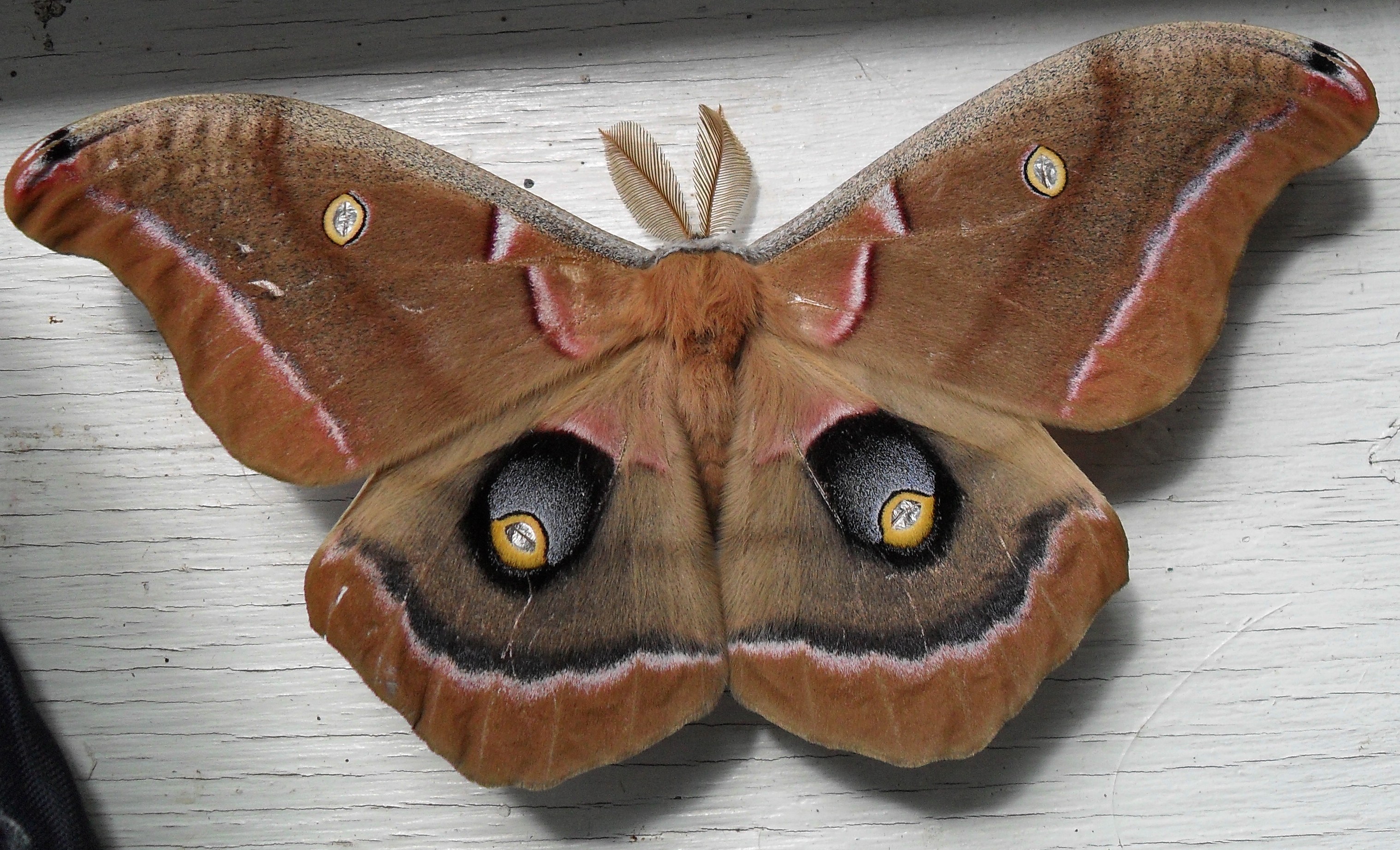
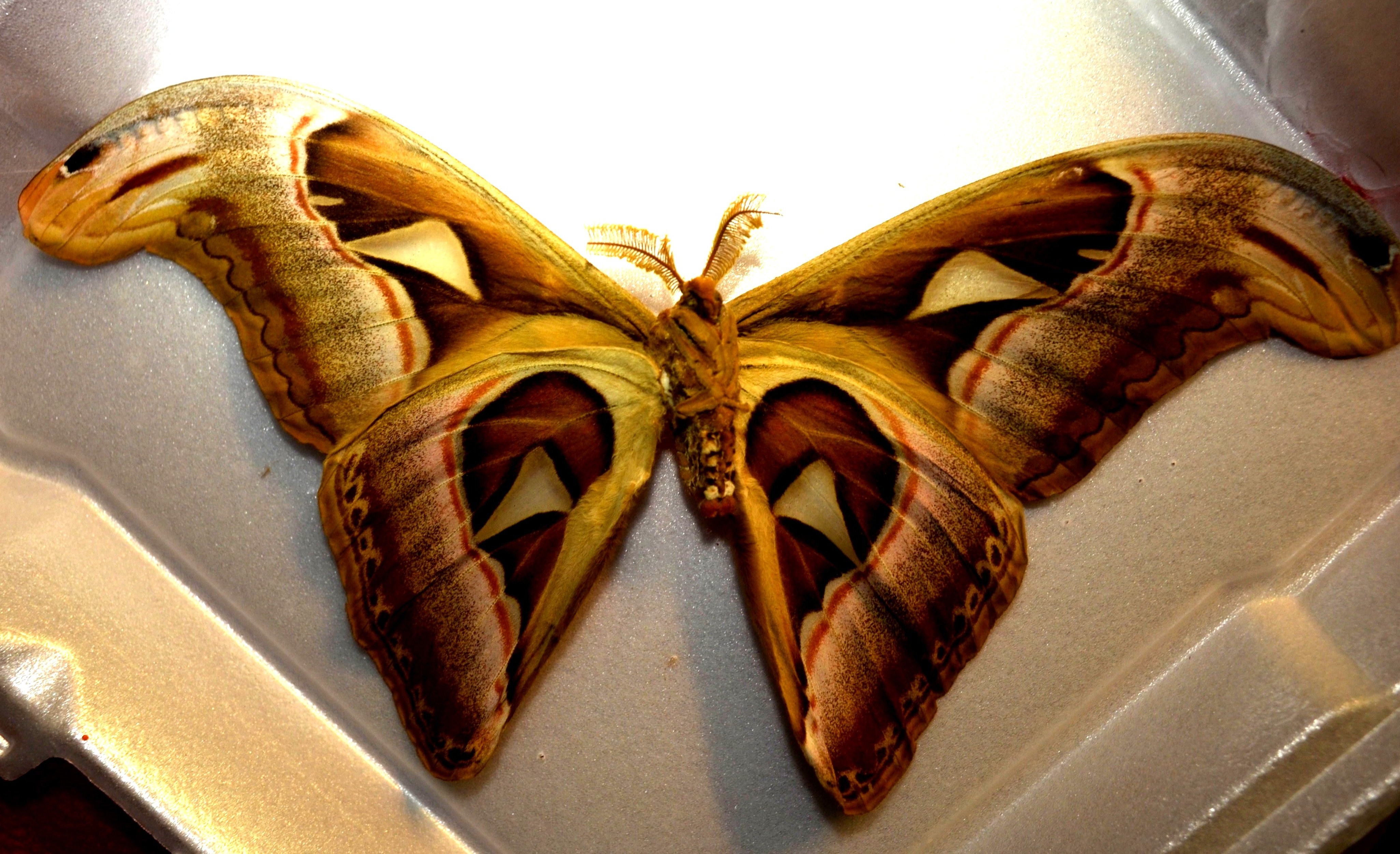
I'd like to say a little about how kids (and adults) can get in on the fun of raising some of these beautiful moths. You will need either to buy some cocoons or some eggs. I have used this website several times. You want to make sure you pick something that comes from the U.S. Otherwise you could be importing something inappropriate for our native environment. Last year Pete Koval brought me an Imperial moth female. She turned out to be pregnant and produced quite a few eggs. Here they are hatching about 13 days later. Next you see a growing tiny caterpillar eating white pine needles. When the caterpillar has grown a bit, she will moult (shed) her tight skin and look larger immediately.
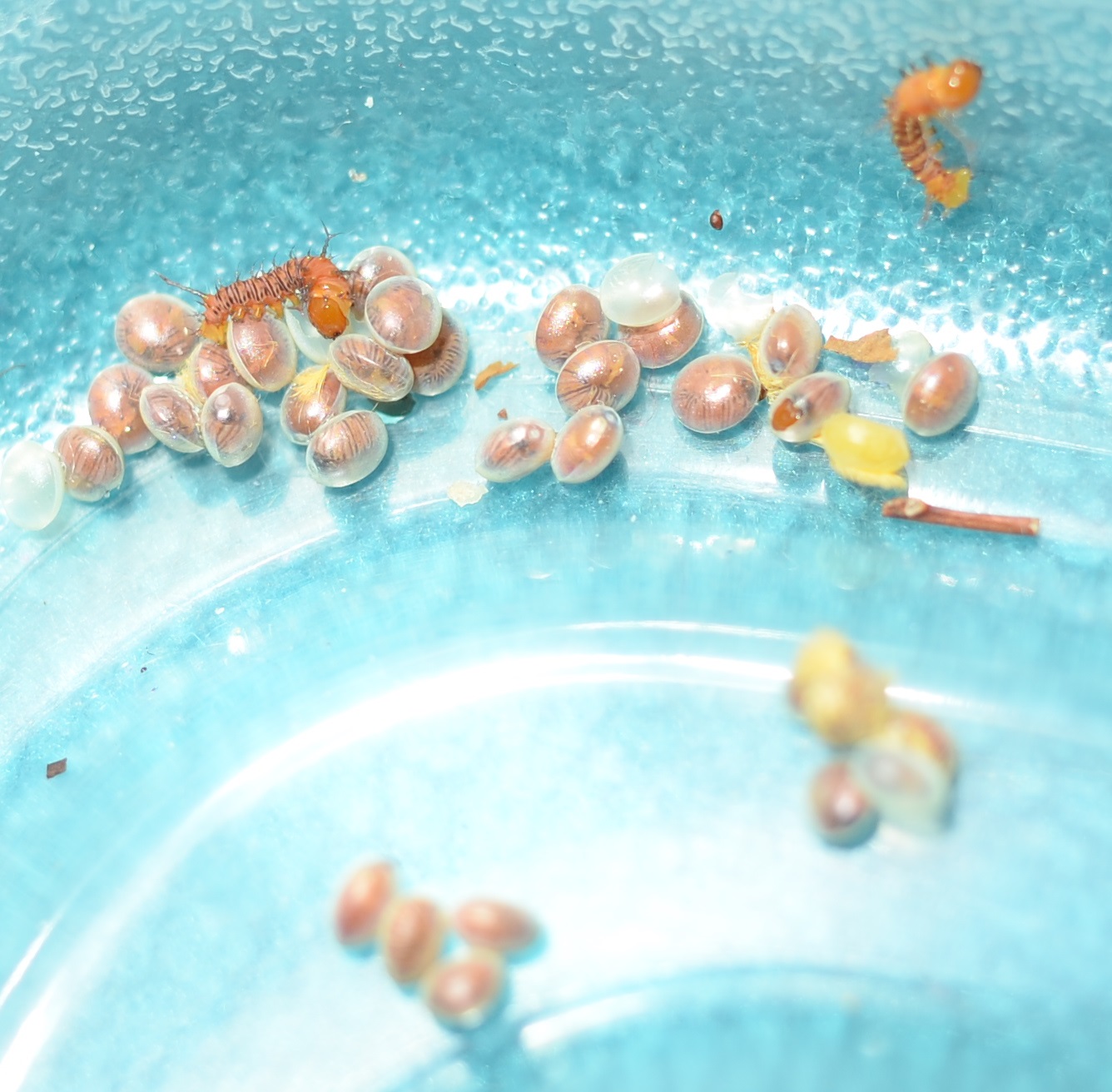

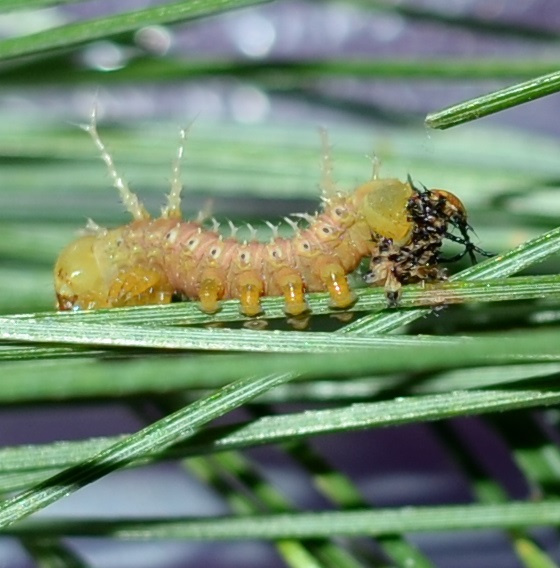
She will do this four times before she is ready to moult the final skin and turn into a pupa, which stage she will be in until about July, when she will emerge.


I hope you have enjoyed this talk as much as I have in developing and presenting it. If you decide you want to try raising caterpillars, keep in touch with me by email to mokennon@albion.edu
Copyright Martha O'Kennon 2016














